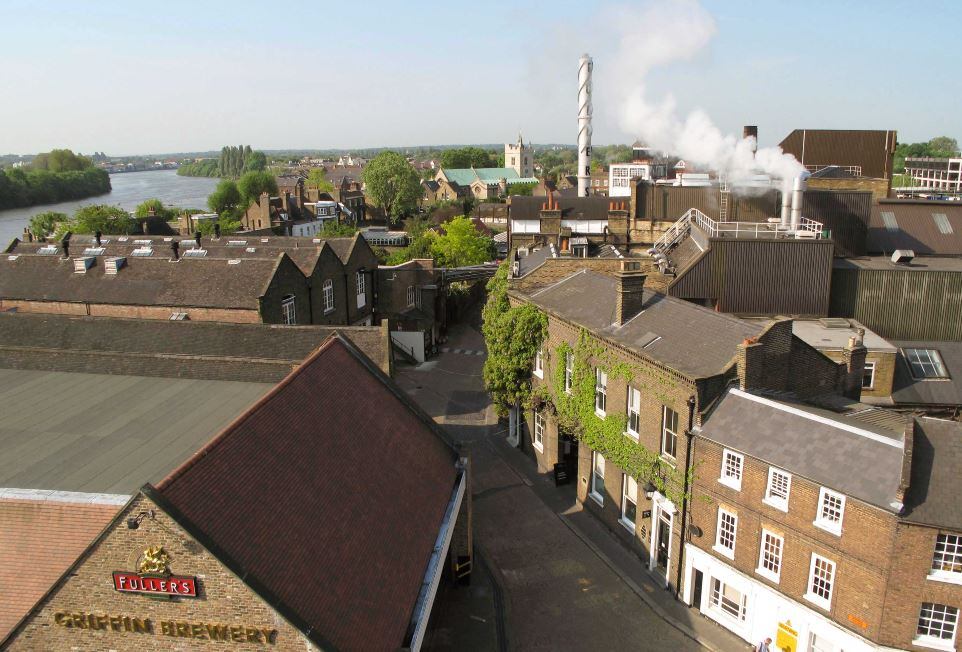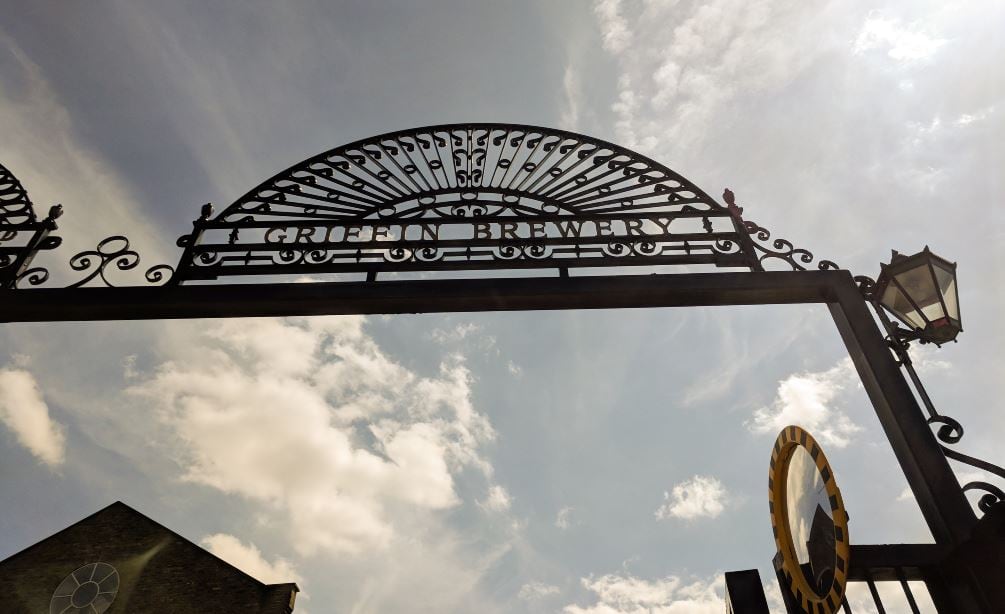Since 1845, the now historic Griffin Brewery has produced iconic London beers on the banks of the River Thames under the name of its founders Fuller, Smith & Turner or rather its more familiar moniker of Fuller’s.
Much has changed in surrounding Chiswick, west London, over the years since the site was founded, but the Griffin Brewery has remained somewhat the same throughout its long life.
The fancy suburban houses, shops, bars and coffee shops that cluster around the brewery have morphed into new homes and businesses over time, yet the west London icon still peeks above it all, like a brewing beacon.

Although the outside of the brewery would likely be familiar to time traveller from the past, there is no question things inside have changed.
Whether that’s the brewing technology, processes or the site’s new focus on attracting visitors, Fuller, Smith and Turner would undoubtedly find it outstanding to see what their business has grown to become.
What the Griffin Brewery has morphed into and how it got there is also of interest to those outside of the industry, who flock from the UK and abroad to see how some of London’s best-known beers are made, with more than 18,000 visitors making the trip last year.
They come in their droves for a taste of freshly brewed beer and to see first hand how things are done at London’s last remaining family brewer, as visitor experience and publicity manager Joanne Steward explains. “No other brewer in London has our heritage and it’s still our home,” she says.
The A4 and the River Thames
“We’ve got Grade II star-listings on our site that we’re so lucky to have in operation and our offices are the town houses that brewers used to live in nestled between the A4 and the River Thames. It reaffirms our place in the history of London brewing.
“It is our heartbeat and spiritual home and everything in our 400 pubs relates to the story of the Griffin Brewery. It is engrained in our thousands of team members across our pubs and throughout the brewery. It’s the focal point of everything we do.”
She continues: “The tour side of things started organically more than 20 years ago when the sales team started bringing their customers round. We thought this could be a part of the business and that’s how we’ve evolved to have a full-on visitor experience.
“We’ve just re-opened our brewery shop, which is a homage to Fuller’s, and it’s got everything including our Only at Fuller’s food range in our deli and one of the most exciting things in our shop is the pilot brewery, which has just been commissioned.
“What I want is for people to come and have an amazing time on-site and really enjoy themselves. They’ll get to know what we’re about as a company and how we operate as a business.
“It’s really linking people to the brewery and showing them that we have a pub estate as well as beer; we want them to join the dots together and understand what Fuller’s is about.”
Back in the main brewery, some 48 individual Fuller’s beers, including the world-famous London Pride, are brew-ed. This equates to 300,000 hectolitres of beer or 52m pints each year.
This is no easy feat though; it’s already been made clear the brewery is old, but there is also no space to expand due to its urban surroundings. “Our operations team would certainly say there are challenges,” explains Steward.
“Chiswick, when the brewery was built, wasn’t part of London. But as the city has grown, it has stayed where it is and because of that we can’t undertake massive expansion, so instead we’ve had to be innovative with how we operate and use the space available.”
Space restraints
To overcome some of the space restraints, the brewer uses the partigyle brewing method and takes liquor off at different gravities to produce both London Pride and ESB from a single mash.
This maximises the brewery’s efficiency and allows the team to produce more than one beer at a time.
The installation of the new pilot brewery in the newly launched visitors’ centre means three batch sizes can now be produced, with the smaller of the commercial kits able to brew around 900 kegs.
The new pilot brewery will allow Fuller’s to experiment and add more innovative beers to its range. It will also give its pub staff the opportunity to make special brews for their sites.

Visitors, although able to see the full brewery in operation, will be able to better understand the brewing process through the pilot brewery because it is on a smaller scale and easier to see how the processes work.
Ensuring visitors get the most out of the brewery tour is currently a big focus for Fuller’s, hence the creation of the new visitors’ centre. The newly refurbished Brewery Shop has the full range of Fuller’s beers on sale and has a Growler Bar – with up to five cask beers and 10 keg beers and ciders on tap at any one time ready for growler fills.
But the brewer is also making itself a bigger part of the local community by organising and hosting the likes of street parties, the inaugural London Brewers’ Alliance Beer Festival and putting on productions including Shakespeare In The Garden.
It is clear that Fuller’s is not resting on its laurels and continues to shape London’s brewing scene. It is experimenting with ideas and playing on its heritage to create an experience like no other in the capital.

